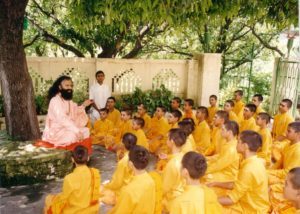The Britishers came to India and harassed the Indians, but they also introduced modern education. They tried to civilize the Indians. Let’s find out more about Civilising the Native, Educating the Nation.
Civilising the Native Educating the Nation: We talk about the British exploitation of our nation quite often. But, would you believe if we say that Britishers introduced proper education in India? Unbelievable, right? However, there is a twist! British felt that they had a cultural mission. They had to ‘civilise the natives’. They wanted to change their customs and values. That is how the whole education system from the British started. In this chapter, let us look at deeper depths into this story and find out more about Civilising the Native, Educating the Nation.
Britishers and Indian Education
In 1783, the East India Company appointed William Jones as a junior judge at the Supreme Court. He started studying ancient Indians texts on law, philosophy, and politics etc. He also concentrated on morality, arithmetic, medicine and other sciences.
The British set up a Madrasa in Calcutta in 1781. This promoted the study of Arabic, Persian and Islamic law. In 1791, the Hindu College was established in Benaras. The motive was to encourage the study of ancient Sanskrit texts. This would be useful for the administration of the country.
Critics
In the early 19th century, many British officials criticized the Orientalist version of learning. James Mill also attacked the Orientalists. According to him, the aim of education ought to teach what was useful and practical. So, Indians should be made familiar with the scientific and technical advances that the West had made.
Thomas Babington Macaulay, another critic of Orientalists, saw India as an uncivilized country that needed to be civilized. Macaulay emphasized the need to teach the English language. Following Macaulay’s minute, the English Education Act of 1835 was introduced. They made English as the medium of instruction for higher education. They stopped the promotion of Oriental institutions.
Education for Commerce
In 1854, the British sent Wood’s Despatch, an educational dispatch, to India. He outlines the educational policy to be followed in India. It emphasized on the practical benefits of the system of European learning.
Wood’s Despatch argued that European learning would improve the moral character of Indians and make them truthful and honest. Thus, there would be more civil servants to the company who could be trusted upon.
Local School Routine
In the 1830s, William Adam, a Scottish missionary toured the district of Bengal and Bihar. He gave a report on the progress of education in vernacular schools. According to him, the system of education was flexible and local schools were known as pathshalas. There were no fixed fee, no printed books, no separate school building.
The schools had no benches or chairs, no blackboards, no system of separate classes. In addition to this, they also lacked roll-call registers, annual examinations, and regular time-table. Teaching process was oral and the guru decided what to teach, in accordance with the needs of the students. Therefore, the British wanted to change this whole system of native education in India. They thought of introducing new routines and rules in Indian education.
New Routines, New Rules
After 1854, the company improved the system of vernacular education. Therefore, they introduced an order within the system, imposing routines. They also established rules and ensured regular inspections. The Company appointed a number of government pundits each in charge of looking after four to five schools. Hence, the government supported those Pathshalas which accepted the new rules.

National Agenda
Some Indians were impressed with the development in Europe. They felt it was good for the nation. They felt that western education would help to modernize India. Mahatma Gandhi and Rabindranath Tagore reacted against western education.
Mahatma Gandhi’s View
- According to Mahatma Gandhi, “English Education has enslaved us”. He urged that colonial education creates a sense of inferiority in the minds of Indians.
- It was sinful and it enslaved Indians. He also believed that it cast an evil spell on them.
- Mahatma Gandhi wanted an education that could help Indians to recover their sense of dignity and self-respect. He saw Indian languages to be the medium of teaching. Indian languages could also develop a person’s mind and soul.
Tagore’s ‘Abode of Peace’:
- Rabindranath Tagore started the Shantiniketan in 1901. According to him, a natural environment encourages creative learning.
- Therefore, he set up his school 100 kilometers away from Calcutta in a rural setting.
- He emphasized the need to teach Science and technology at Shantiniketan along with art, music, and dance. Hence, the syllabus was vast and covered all of the above subjects.
Solved Examples for You
Q1. Give Mahatma Gandhi’s views on Modern Education.
Sol.
- According to Mahatma Gandhi, “English Education has enslaved us”. He urged that colonial education creates a sense of inferiority in the minds of Indians. It was sinful and it enslaved Indians. He believed it cast an evil spell on them.
- Mahatma Gandhi wanted an education that could help Indians to recover their sense of dignity and self-respect. He saw Indian languages to be the medium of teaching. Indian languages could also develop a person’s mind and soul.